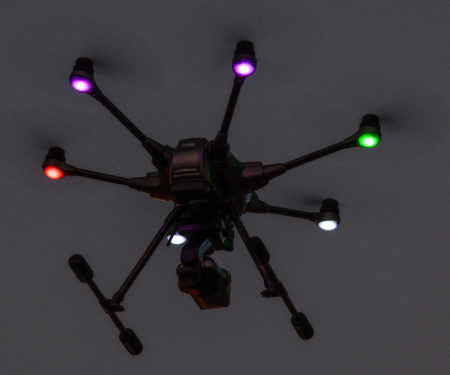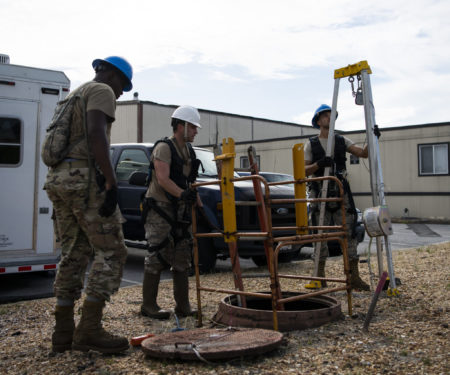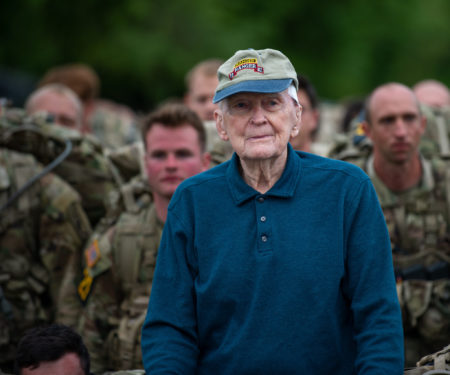Radar Sweep
Ponytails and Braids: Signs of a More Inclusive US Military
On a Pentagon stage earlier this year, three senior noncommissioned officers—all men—discussed the merits of changing the Army’s appearance regulations for women. The town hall, broadcast online, turned to whether women should be allowed to wear stud earrings. “I’m just going to be honest: If you’d asked me before, I would’ve said, ‘No, why do we need earrings?’” said Sgt. Maj. of the Army Michael Grinston. But task force testimony from behavioral health specialists helped the men see the matter differently, Sgt. Maj. Mark Clark added. “I will tell you, we learned quite a bit” about how old policies affected women “in a masculine Army.” Earrings “kind of helped bridge the gap” for those “who want to serve and be soldiers, but also want to feel like a female at the same time.”
Cyber Leaders Get Creative in Attracting Talent
Every cyber warrior can be a cyber recruiter, according to panelists at the AFCEA TechNet Augusta Virtual Event Series. The United States faces a severe shortage in cyber personnel and in students willing to enter the cyber workforce. That shortage is even more acute in the government and the military, where talented personnel are often recruited by industry for higher pay and other incentives. But every cyber warrior can serve double duty as a cyber recruiter, according to USAF Brig. Gen. Bradley Pyburn, deputy commander of 16th Air Force (Air Forces Cyber). “None of us should miss the opportunity to be an ambassador. We can’t think about recruiting as some far-off station in a strip mall somewhere. Every time we interact with folks, we have a chance to demystify service to our nation and show them how awesome it is.”
Aerospace Industrial Base Can’t Handle The Future: Mitchell Institute
The U.S. aerospace industrial base cannot meet the Air Force’s or the wider military’s emerging needs for rapid innovation to stay ahead of peer competitors, the Mitchell Institute for Aerospace Studies says. “What we found was that the structure and business models of today’s aerospace defense industrial base is not configured to invent, develop, or deliver the force, the future needs, and certainly not at the pace that a technologically peer adversary will demand,” Heather Penney, senior resident fellow at Mitchell, said May 18. “Time is the new offset; adaptation is our new advantage,” said retired Lt. Gen. David A. Deptula, the institute’s dean.
Space Force Launches Billion-dollar Satellite to Warn of Missile Launches
A United Launch Alliance Atlas 5 rocket carrying a Space Force missile-warning satellite and two small payloads lifted off May 18 at 1:37 p.m. Eastern from Space Launch Complex-41 at Cape Canaveral Space Force Station, Florida. The primary payload, SBIRS GEO-5, is the fifth of the Space Based Infrared System network of satellites and hosted payloads in geosynchronous Earth orbit and highly elliptical orbit. The satellites use scanning and staring infrared sensors to detect ballistic missile launches anywhere on the globe.
Russia's Northernmost Base Projects its Power Across Arctic
During the Cold War, Russia’s Nagurskoye airbase was little more than a runway, a weather station, and a communications outpost in the Franz Josef Land archipelago. It was a remote and desolate home mostly for polar bears, where temperatures plunge in winter to minus-42 Celsius (43 degrees below zero Fahrenheit) and the snow only disappears from August to mid-September. Now, Russia’s northernmost military base is bristling with missiles and radar and its extended runway can handle all types of aircraft, including nuclear-capable strategic bombers, projecting Moscow’s power and influence across the Arctic amid intensifying international competition for the region’s vast resources.
Desperate For Firepower, the US Air Force Loads Cruise Missiles on Cargo Planes
After less than two years of furious work, the Air Force is close to finishing a parachute missile-launcher that, in theory, converts any big cargo plane into a bomber. Back in March, over White Sands Missile Range in New Mexico, an MC-130J transport belonging to the Air Force Special Operations Command dropped an instrumented “deployment box” attached to a G-11 high-altitude parachute. Mostly, it was a test of the box’s stability during a high-altitude drop. But the trial also marked the Air Force’s steady progress toward actually deploying a “missile in a box” and growing, by hundreds, the number of aircraft it can deploy for long-range strikes.
A Starcruiser for Space Force: Thinking Through the Imminent Transformation of Spacepower
The U.S. military has launched and operated Earth-orbiting satellites since the Discoverer 1 mission in March 1959. Despite this long-term presence in space, spacepower as a mature military discipline remains in its infancy. However, change is coming faster than many expect. The X-37B spacecraft—the first true military spaceplane—foreshadows the “end of the beginning” for military space as satellites, tiny spaceplanes, and single-use orbital boosters give way to massive fleets of very large, maneuverable, and reusable spacefaring vehicles.
Microsoft and Ball Aerospace Enlist the Cloud to Speed up Space Force’s Data Flow
How will Pentagon planners cope with the torrents of data that are expected to rain down from a constellation of satellites monitoring hotspots from low Earth orbit? Microsoft and Ball Aerospace say they’ve demonstrated that the cloud can handle it—and not just handle it, but process multiple streams of satellite data five times faster than the Pentagon’s target speed. The demonstration of a prototype system was conducted this year for the Pentagon’s Defense Innovation Unit in support of the Commercially Augmented Space Inter Networked Operations Program Office, or CASINO, which is under the aegis of the U.S. Space Force’s Space and Missile Systems Center.
If the Pentagon Drops JEDI, Then What?
The outlook for the Joint Enterprise Defense Infrastructure contract—the Pentagon’s $10 billion general purpose cloud project—looks gloomier after a federal judge denied a motion to dismiss political interference allegations made by Amazon Web Services. Since January, when the Defense Department sent Congress and media an information paper suggesting such a decision would likely imperil the contract, officials have been repeating the same line: The capabilities meant to be provided by JEDI, which was awarded to Microsoft for a second time in September, are still urgently needed.
Top Aces' F-16 Takes First Flight
“Top Aces made history once again as its F-16 fighter aircraft earned [Federal Aviation Administration] certification and took its first flight,” according to the private flight school Top Aces in Mesa, Arizona, on May 18, 2021. “Top Aces is the first private company in the world to operate F-16s under commercial license.”





